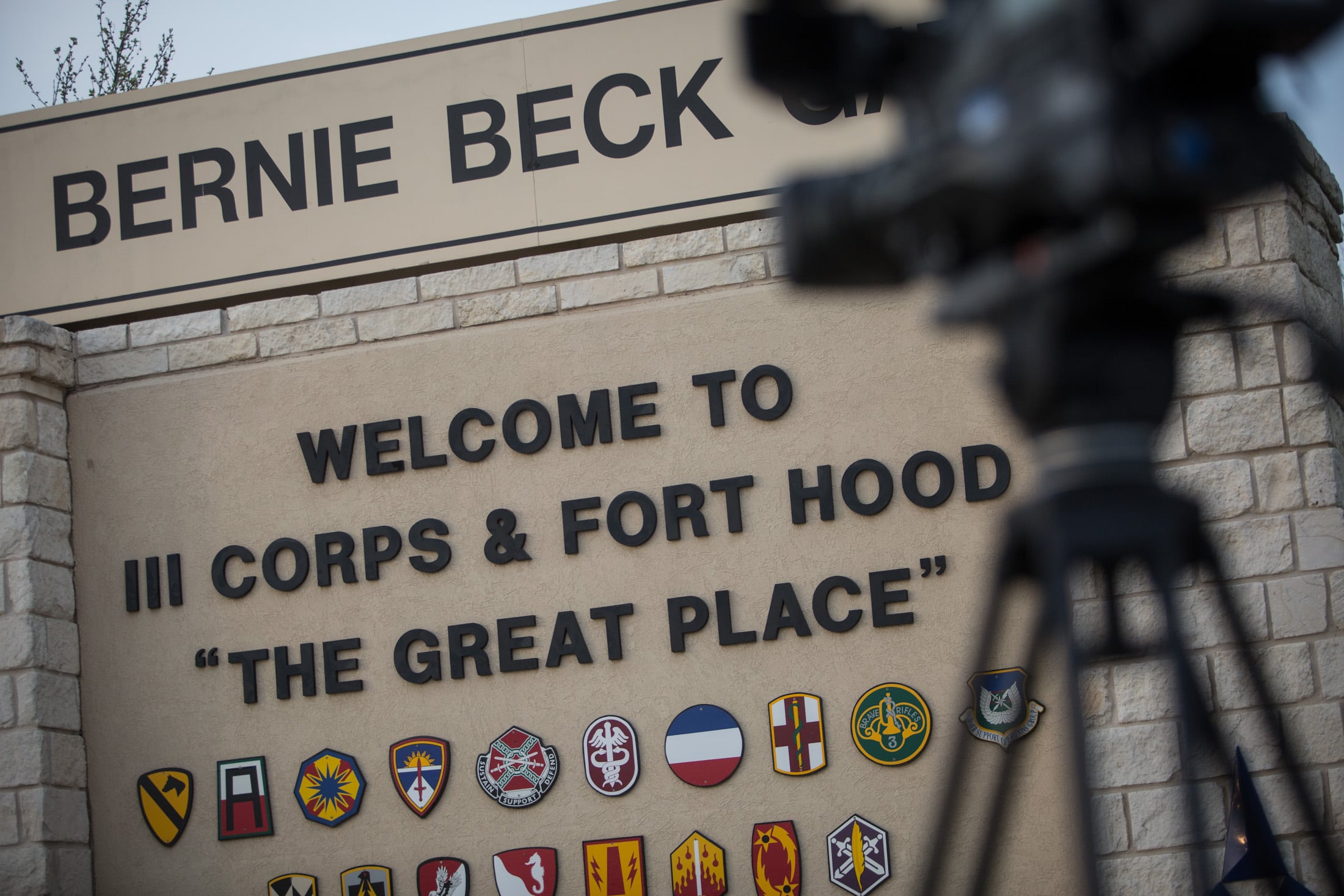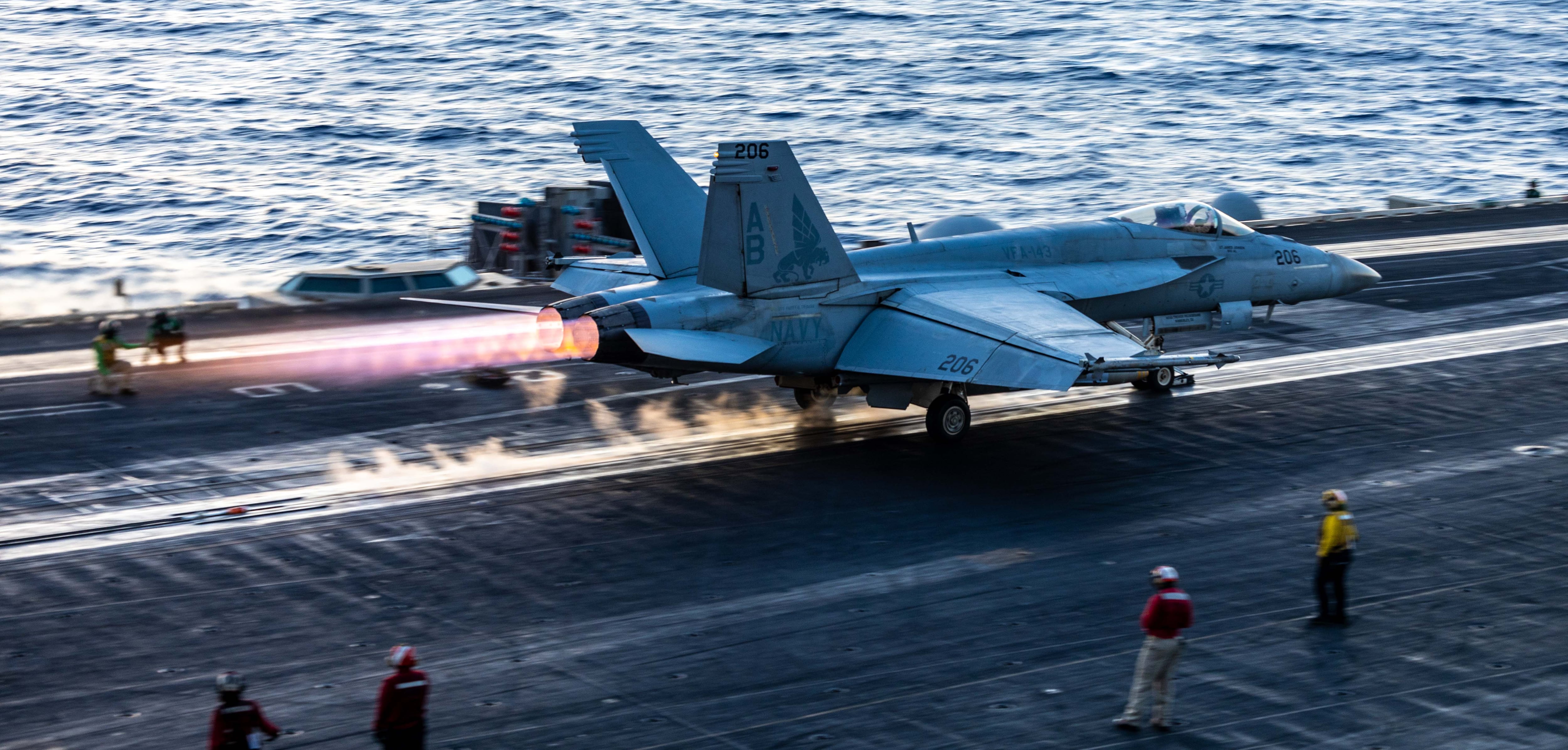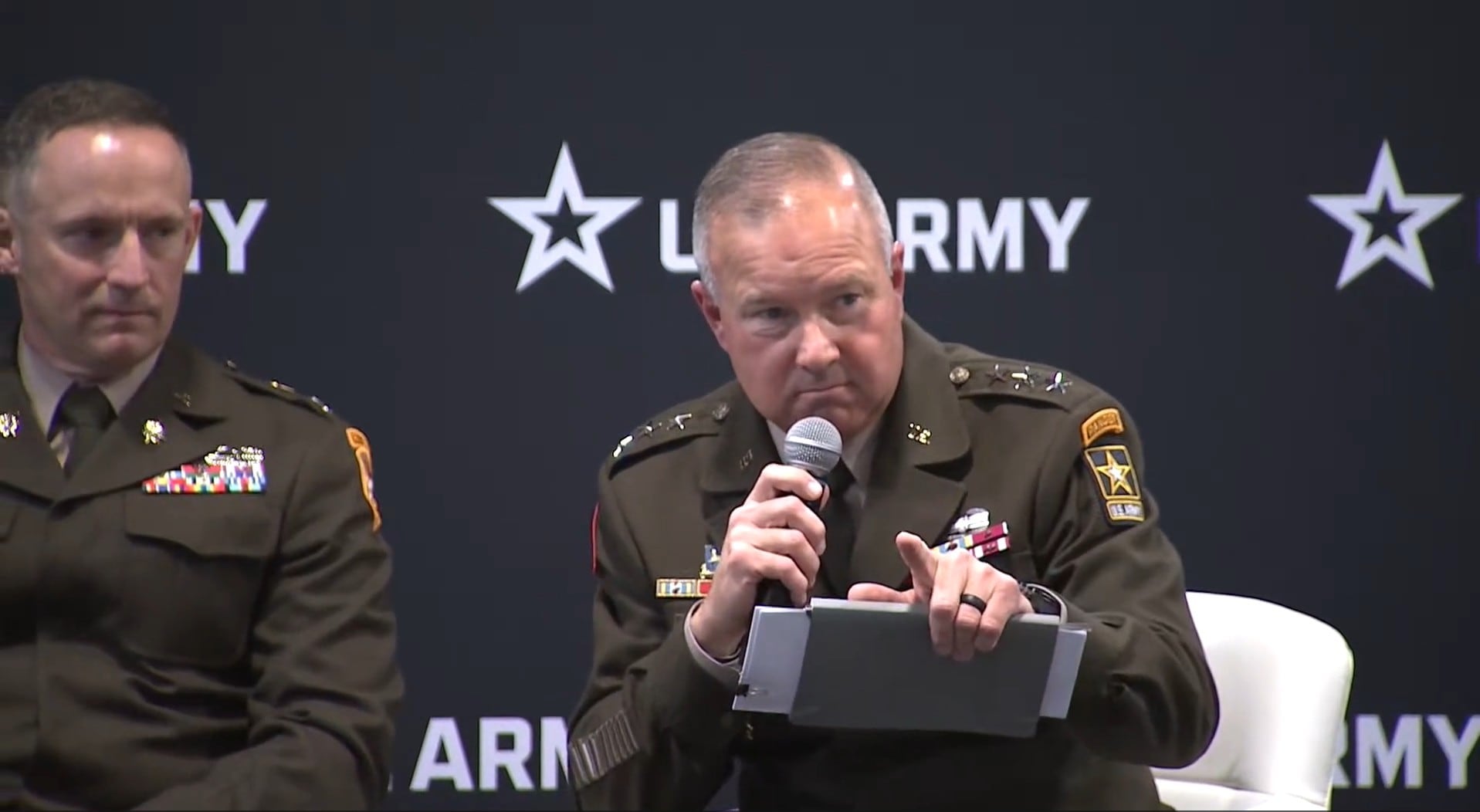QUANTICO, Virginia ― In mid-December 2021, new Marine second lieutenants at The Basic School in Quantico, Virginia, enjoyed an outdoor barbecue on a training field.
The young officers each filleted their own seabass and small teams butchered a pig before throwing it on the fire and having a mid-afternoon snack.
But from what could have looked like a day off, the Marines were learning important lessons about how the Corps may conduct logistics in the future.
The event was part of a new course at TBS.
“It’s really about thinking about logistics a little bit differently,” said Maj. Patrick Fitzgibbons, with Warfighter Instructor Battalion. “We want the students to be able to think through how they are going to sustain their force for extended periods of time.”
Expeditionary foraging may be a key piece in the way the Marine Corps is preparing to fight.
Feeding a platoon
The Corps is redesigning itself to fight in small, heavily armed and widely dispersed teams.
Marines will have missiles capable of sinking ships and work in teams that can hide from even the most sophisticated enemy.
But all of that is worthless if they are reliant on a long supply chain that stretches from the South Pacific or northern Europe all the way back to the U.S.
The first thing Marines need in those future distributed environments is learning to need less, said then-Lt. Gen. Eric Smith, at the August 2021 Sea-Air-Space conference in National Harbor, Maryland.
“Why would I move water to the South China Sea?” asked the former commander of the Marine Corps Combat Development Command and the deputy commandant for combat development. “That’s insane, why would I move food?”
Smith has since been promoted to general and now serves as the Corps’ assistant commandant.
The Dec. 13, 2021, TBS class was the fourth to complete the foraging course, which has been in development since July 2021, said 1st Lt. Phillip Parker.
The course involves a one-hour lecture on how foraging can be used, followed by four hours of practical training designed to get all the Marines a rough understanding of fieldcraft, whether they grew up in the woods or have never camped in their lives.
The Basic School student 2nd Lt. Bryce Beckish grew up spending a lot of time in the outdoors, so he already was familiar with some of the specific techniques. But he never had to think about feeding more than himself while camping.
“I tried to go out in the woods with as little utilities as I possibly could … cooking and cleaning animals has been a thing in my past. It’s a whole different ballgame when you are trying to feed a platoon sized element.”
Not all of the young lieutenants were as familiar with butchering pigs and filleting fish, however.
“I learned a lot today, I literally didn’t know anything before we got here,” 2nd Lt. Samantha Frain said.
She was a little nauseous when watching the food service Marines go over butchering a pig. To get over her queasiness, Frain jumped in and took a leading role.
“It’s been really fun, I’ve enjoyed my time foraging today,” she said after cutting off one of the larger chunks of pork.
Buying local
Though fieldcraft is a large part of modern day foraging, the Corps does not see Marines stalking prey or harvesting wild fruits and vegetables, like camouflaged hunter-gatherers.
“This isn’t about hunting or this isn’t about surviving, this is about keeping their force, going longer without the need for resupply,” Fitzgibbons said.
Instead, Lt. Col. Julian Tsukano sees Marines connecting with local suppliers capable of meeting the needs of a company or a platoon of Marines.
Tsukano is the commander of Marine Corps Detachment Fort Lee, Virginia, responsible for training 11 military occupational specialties within the logistics field.
Marines are taught how to identify which sheep or pigs they should buy off a local farmer, how much food is necessary to feed their platoons and, of course, how to butcher and prepare food in the field.
Buying local reduces the Marine Corps’ reliance on long vulnerable supply lines that could be easy targets for a near-peer opponent.
It also makes the Marines harder to find, as long supply lines can be used as arrows pointing directly to those supposedly hidden and dispersed units.
When conducting expeditionary foraging, “You no longer have to pull from all the way in the continental United States and bring those supplies at great expense all the way into your operational area,” Tsukano said.
Though the course will teach these future Marine leaders practical skills around local resupply, the main goal is to ingrain in them the mindset of what is possible in terms of logistics, Fitzgibbons said.
“All the cammie paint, the cammie netting, all the operating at night, that is all for naught if your logistics is loud and screaming in on these large trucks,” he added.
The foraging techniques, if done right, will improve the Marines’ relationship with the locals around their base, turning the Marines’ housing into a local economy boon rather than a burden, he added.
Though the course will teach these future Marine leaders practical skills around local resupply, the main goal is to give them the mindset of what is possible in terms of logistics, Fitzgibbons said.
“We are teaching the lieutenants and the student to think outside the box,” he said.
New tools
The Corps is looking at adding a similar course to the enlisted basic training pipeline.
But the real work is happening at the Marine Detachment Fort Lee, Virginia, where various logistics related enlisted Marines are receiving much more in-depth training on how to locally forage, Tsukano said.
There food service noncommissioned officers and staff noncommissioned officers go through a longer course where they are given more in-depth training on what they can bring to a platoon or company they deploy with.
The schoolhouse at Fort Lee, Virginia, is developing a foraging kit that will come with a butchering kit that has knifes made to last in the field environment Marines are expected to deploy to.
Tsukano is also looking at how South American gauchos supply their teams while spending long weeks or months in the field herding cattle.
Eventually Tsukano sees the Corps bringing back field mess kits for certain style of deployments, replacing the disposable paper cups, plates and plastic utensils Marines use to eat most of their meals while on deployment.
In addition to reducing the logistical burden that comes with transporting millions of disposable products to the front line, the metal plates, bowls and utensils would reduce the trash those units produce, making it easier for them to hide from the enemy.
The foraging classes at Fort Lee, Virginia, go beyond just food though, with bulk fuel specialists learning how scavenge for gas.
Marines are being taught how to buy gas at local gas stations and how to siphon gas out of captured or partially destroyed enemy vehicles.
Once they acquired the gas, they are learning how to remove impurities and make the gas usable for all military vehicles from the smallest utility task vehicle to the F-35 if a unit is in a pinch.
“We can do that right now,” Tsukano said. “We’ve given Marines the tools and the competency and hopefully their commanders will employ them wherever they need to forge for fuel.”









